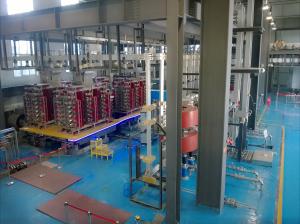Successful 72-hour testing for converter prototype in China
27 Feb 2015
-
Li Dong, ITER China
At the ASIPP site in Hefei, China, long-duration, steady-state operation testing of the poloidal field AC/DC converter unit prototype was successfully carried out in February.
Procurement activities for ITER's poloidal field converters took a step forward in early February, as the long-duration, steady-state operation testing of the poloidal field AC/DC converter unit prototype was successfully carried out at the Institute of Plasma Physics, Chinese Academy of Sciences (ASIPP). China is responsible for procuring the 14 poloidal field converters that will provide controllable current/voltage to ITER's six poloidal field coils.
The long duration steady-state operation test of the poloidal field converter unit—with rated continuous current, voltage and four-quadrant operation—was launched on 5 February and lasted three days and three nights (approximately 72 hours). As expected, the prototype demonstrated good stability and reliable performance throughout the test.
The 72-hour testing was important for unearthing potential problems and risks for the different subsystems during the steady-state operation of the poloidal field converter unit.
The success of the steady-state operation test will provide the data for the manufacture readiness review as well as experience for future batch production.


